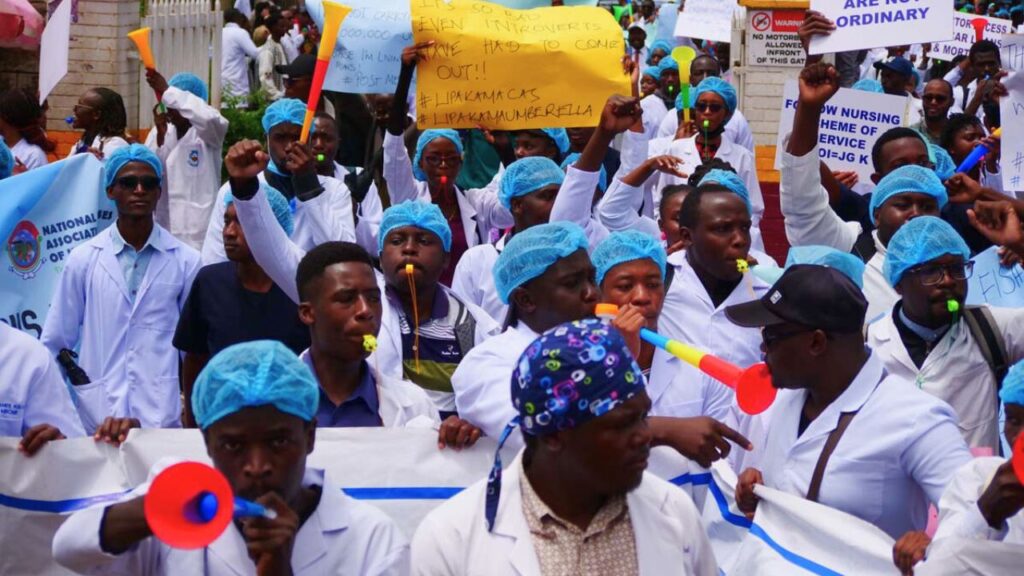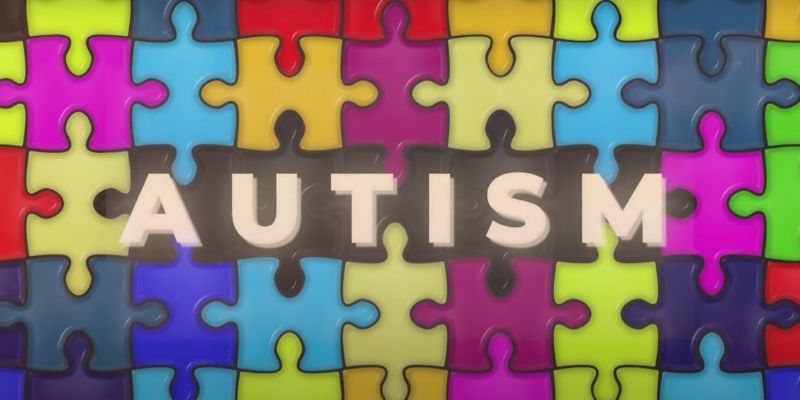Our hominin ancestors descended from the canopy and hit the ground running. Bipedalism equipped the species with evolutionary advantages including the use of tools, enhanced cognitive skills, and the capacity for long distance travel. Human history became a record of mass migrations as our species travelled across desert, mountains, and through forests, peopling the continents and occupying the planet’s most remote islands and archipelagos. Then, around six thousand years ago, they started settling down.
The rest was inevitable. What began as the wandering of bands and clans eventually gave way to the mastery over nature and conquests that shaped and reconfigured the modern world. The disruptions of the Second World War and the decolonization that followed completed the world’s present ethno-nationalist map. The post-World II era was a period of state consolidation. Together with decolonization, it conveyed the impression of a sorted-out world map where almost everyone belonged to a territorially-defined place.
This status quo shifted in 1989. Freedom of movement resumed and thirty-four new states came into existence. Although the transnational flows of goods, services, and capital did not extend to labour, events following the neoliberal opening triggered a new wave of population movement. International migration increased by 41 per cent between the turn of the millennium and 2015. Migrants now comprise 3.6 per cent of the global population of 7.96 billion, and they remit some US$720 billion to their home countries.
Africans contributed only a small portion of the increase responsible for the surge, despite perceptions that locate them in the front of the wave. It’s not that they don’t want to move. A recent study reported that 52 per cent of the young Africans questioned are planning to move abroad in the next three years—marking a strong contrast with a survey several years ago that found more than two-thirds of the continent’s young people want to stay put. Their options, however, are limited.
This is in part due to the high numbers of immigrants from other regions who preceded them. Where European migration provided by far the largest number since 1492, Asia provided the largest segment of people who have resettled abroad since 1989. Most migration routes now run from south to north and from east to west. What began as resettlement and labour contracts ended up contributing to the we-are-here-because-you-were-there meme.
The backlash against immigration that is raising barriers to travel and resettlement is not only a Western country problem. The sentiments behind Brexit and Trump’s MAGA xenophobia are to be found in the intolerance for non-indigenous residents in many African countries. South Africa may be the most blatant example, but migrants in neighbouring countries remain vulnerable to political vagaries, as the large number of Kenyans who set up base in newly independent South Sudan discovered. An estimated 1 to 2 million Chinese, many of them contract labourers and small businessmen, have migrated to the continent at the same time as Africans are face growing impediments to setting up shop in neighbouring countries. Chinese sources report a much lower number, but they only include workers on formal contracts.
Migrants have always been pawns in domestic politics and the games nations play. The artificial refugee crisis created by the Government of Belarus in 2021 is one example. President Alexander Lukashenko boasted that he would flood the European Union with drug smugglers, human traffickers, and armed migrants. Flights to the Middle East were increased to accommodate the tens of thousands of mainly Kurdish refugees who received new visas. The government said they were promoting their tourism sector. Arrivals reported they were provided with wire cutters and directions to unprotected border points.
The coronavirus pandemic added biomedical criteria to the list of conditions travellers must satisfy. Such trends contrast with economists’ reckoning that the free movement of people is one of our most effective tools for poverty reduction, and that it could potentially increase global GDP by over 30 per cent.
Despite the many success stories of displaced communities who have made good, perceptions of migration are now intertwined with climate change, socioeconomic precarity, and the other political forces reconfiguring today’s world. The administrative and political constraints hindering international travel immigration have long term implications for Africa’s developmental trajectory at a time when the continent’s population is surging.
Or does it?
External perspectives on African migration
There are many variations on the large-scale movement from one environment to another: involuntary, circular, seasonal, episodic, transnational, sponsored, and spontaneous to name a few. The scope of migration studies and policy analysis is by the same measure extensive and multi-faceted. This literature conveys a rather complicated picture of the dynamics in play and the empirical outcomes they continue to generate.
The common approach sees migration as a series of discreet events, reinforced by the role of diverse influences like political conflicts, environmental calamities, and economic drivers. It is further obfuscated by the influence of ethnic diasporas, reactionary populist enclaves, and human trafficking networks. Nomenclature distinguishing migrant from immigrant, immigrant from citizen, and guest workers from expatriates adds an element of incongruency.
The world appears to be awash with ever increasing numbers of migrants as the news cycle saturates us with images from crisis spots like Syria, Afghanistan, and the Ukraine. But the popular perception that most migration is driven by domestic crises does not synch with the large body of research, data, and scholarship. Rather, the evidence shows the migration is beneficial for both the new hosts and sending nations. Refugees comprise only a minor portion of the people on the move according to global data statistics.
The data also indicates that most international migration follows conventional pathways and formal procedures. The great majority of Africans leaving the continent do so in possession of valid passports and visas. The typical immigrant leaves in search of education, employment, and to reunite with family members. One study of African trends and patterns since 1960 calculated that only 20 per cent of African migrants between 1960 and 2010 were attributable to conflict and poverty. The analysis goes a long way towards debunking the stereotypical view that African is a continent on the move, and that most of the traffic is directed toward Europe.
The popular perception that most migration is driven by domestic crises does not synch with the large body of research, data, and scholarship.
But this is not 2010. The world has shifted. The intensity of African migration (the percentage of emigration relative to the domestic population) has decreased, but this is accompanied by recent claims that environmental disasters, political instability, and the uneven impacts of globalisation now account for the majority of African movements. A UN University study on the root causes and regulatory dynamics of African migration begins with the highly dubious claim that migrants now comprise 12.5 per cent of the world’s population. It proceeds to observe that:
There are an estimated 1 billion migrants in the world today and demographic imbalances, economic inequality, increased globalization, political instability and climatic changes will all contribute to increasing large-scale migration in the coming decades, disproportionally affecting the Global South.
Determining the facts is not easy. After Syria, Africa as a region does host the world’s largest share of displaced persons. But the study cited here does little to clarify what the disproportionate effects referred to actually are. Even if the role of episodic events is greater at this juncture, the overall rate of African migration has declined to 2.9 per cent, and 79 per cent of that statistic is limited to the emigrants’ home region.
The same localized pattern holds for the impacts of climate change. Images generated by crisis-driven migration have nevertheless come to personify the influence of the environmental changes erupting across the planet. Levels of uncertainty are increasing apace. The sheer numbers of asylum seekers quarantined on the Greek island of Lesbos, and the sordid conditions of the refugees packed into the “Calais Jungle” camp in northern France reinforce public support for tightening borders. At the same time, unmet demand in labour markets is reflected in the growth of human trafficking, which tripled between 2008 and 2019.
Institutionalization of state surveillance in China and the zero-tolerance enforcement towards asylum seekers in Australia and eastern European countries may be symptoms of the fading neo-liberal vision. These and other policies are also influenced by the perceived threat of mass migration: allowing a small trickle today will turn into a flood tomorrow. Once again, empirical data contradicts popular perceptions. The UNHCR reports that two-thirds of the world’s refugees come from five countries: Syria, Venezuela, Afghanistan, South Sudan, and Myanmar.
Local and regional issues are responsible for the great majority of involuntary movements. The internally displaced now make up the great majority of the world’s refugees. The strict transnational protocols being enacted nevertheless point to the hidden transcript influencing white-wing populist narratives. Commentators like Tucker Carlson, for example, exploit ethno-nationalist nostalgia combined with the longstanding fear of barbarians at the gate to promote his replacement theory polemic in the United States.
The internally displaced now make up the great majority of the world’s refugees.
They need not worry. Migration is a function of capacity. For the highly skilled, migration is easy, and they emigrate over long distances. Although the poor also migrate, they do so less often and cover much shorter distances.
Redefining African migration
Studies of migration typically focus on push and pull factors, socioeconomic variables, directionality and destinations, and feedback effects like the brain-drain and other impacts. For present purposes, its best to redefine immigration as process, punctuated by stress and friction, facilitating the flow of ideas, and leading to outcomes including integration, assimilation, and coevolutionary syntheses.
African exemplars of this process encompass distinct Mediterranean and Sub-Saharan African variations. Examples of mass migration include the Arabisation of North Africa, the Nuer’s rapid expansion at the expense of the Dinka between 1795 and 1845, and the Ogaden Somali migrations into northeastern Kenya after crossing the Juba river. But for the most part, African history is a record of small groups inscribing multi-directional migrations out of several linguistic “cradlelands” or dispersal areas.
Africa’s historically low population densities, climatic and environmental uncertainty, and irregular distribution of natural resources favoured the free movement of people. Spatial variables and the variegated landscape played a primary role in the patterns of migration and settlement. The role of iron and the domestication of plant and animal species featured prominently in the slow but steady distribution of the population across the continent. In most cases expansion took the form of clans, extended families, and individuals covering relatively short distances.
This growth reached a threshold around 1250 CE, when the end of the high humidity climate of the first millennia set a number of populations on the move. This led to the modern configuration of the larger eastern and Horn of Africa region. The outcome of these movements, as the archaeological record dating back to proto-historic times shows, was a quilt-work of sedentary, transhumant, and nomadic communities. They practiced a spectrum of livelihood strategies adapted to the mosaic of irregular ecological niches.
Over time a number of cultural solidarities emerged. Examples are the agricultural Akan-Ashanti, Mande, and pastoral Fulani and Tuareg in West Africa, the pre-Arab Amazigh of northern Africa, and the Swahili of the Afro-Indian Ocean littoral.
African state formation occurred in a diversity of settings, while freedom to move on moderated the hegemonic proclivities of kingdoms and lineage societies. In West Africa, population compaction in the forest zone and long-distance commerce in the Sahel explain the earlier emergence and greater permanence of centralized states. The kingdoms of the Great Lakes came about through the confluence of Cushitic, Nilotic, and Bantu elements. Like Abyssinia, they trace their origins to the process of secondary state formation originating in ancient Egypt.
In many of these states the proclivity for centralization was countered by people’s ability to vote with their feet. Ruling clans carried their royal power objects and traditions with them in the case of the Lwoo speakers. Since the proto historical era the process resulted in resilient ethno-cultural mosaics bound together by webs of exchange, practicing different forms of decentralized governance, and demarcated by the interactive neutral zones that served as borders. These mosaics provided the underpinning for Africa’s distinctly coevolutionary developmental trajectory.
Many of these areas supported a coevolutionary dynamic that by the late precolonial era was feeding into the rise of proto-state organization, including the multi-ethnic followings attracted to charismatic leaders and prophets, and councils integrating generational age-set systems. Kinship fictive and real operated alongside other cultural institutions accommodating the migration and assimilation of clans and individuals.
The rise of multi-ethnic polities and networks continued up to the moment of European intervention. Imperial conquest short-circuited the process. The formation of Africa’s colonial states ring-fenced communities, demarcating hard borders separating nations and communities. Migration continued, but the process was now managed from above.
Contrary to the expectations cultivated by the Pan-African movement, decolonization actually resulted in a decline of migration. Governments used immigration controls to demonstrate their sovereignty over the populations within their borders. Both Ghana and Nigeria ordered large-scale deportations of African immigrants within their borders two decades into the independence era. Many countries imposed strict requirements for African nationals’ visas.
As noted above, most of the movement and scope for policy-based solutions is now taking place on the regional scale. Africa’s regional economic communities like the Economic Community of West African States, the East African Community, and the Southern African Development Community have endorsed policies supporting the free movement of people, but governments continue to display ambivalence when it comes to implementation. Intra-African movements continue to decline, especially for land-locked countries, although migration abroad remains strong in a sample of countries that include Angola, Ethiopia, Somalia, Sudan, Uganda and Kenya.
Contrary to the expectations cultivated by the Pan-African movement, decolonization actually resulted in a decline of migration.
Africa’s mosaic template remains active, but at this moment it is for the most part sustained by internal displacement and the waves of refugees seeking sanctuary across borders. Both conflict and migration have always been intrinsic to socioeconomic transitions. This dynamic assumes greater cogency in current circumstances, where intra-African migration continues to decline and African states remain reluctant to relax border controls. These conditions in turn highlight the role of informal processes on the margins.
The region’s rangelands are the one area where the free movement of goods and peoples still follow the dynamics displaced by the imposition of artificial boundaries. A new IGAD-UNDP project supporting cross-border free-trade zones represents a first step towards recognizing how developments in these areas are contributing to regional integration. Benefits generated by the new socioeconomic mosaics emerging in the borderlands include improved cooperation among government administrators on issues of conflict, livestock rustling, and human trafficking.
No population is permanent
The evolutionary importance of migration remains undiminished. On a crowded planet demanding creative solutions, coevolutionary processes across system scales from local to global are the contemporary equivalent of bipedalism.
In an influential 1971 paper entitled Hypothesis of the Mobility Transition, Wilbur Zelinsky argued that processes of economic development and modernisation coincided with increasing rural-to-urban migration followed by a subsequent increase in emigration. Subsequent developments supported his predictions: as societies become wealthy emigration decreases and immigration increases.
Rising emigration is normally an indicator of a nation’s economic growth, education, and access to information and transnational networks. By this measure, Kenya’s mobility transition is well underway. The diaspora is an active contributor the national economy, and the country’s percentage of immigrants has gradually risen from 2.14 to 2.35 since 2005. These other indicators suggest it is one of a cluster of African nations poised to become net destination countries over the coming years.
Kalundi Serumaga’s companion piece to this essay clarifies the local context of the pathways discussed here. As he reminds us, modern world history is mainly a record of Western European migration. Their peregrinations gave us the present world system. If migration is a function of capacity and institutional checkpoints, this still favours citizens from the Global North—prompting Serumaga to conclude by predicting that the next large-scale migration into Africa will be Caucasian.
On a crowded planet demanding creative solutions, coevolutionary processes across system scales from local to global are the contemporary equivalent of bipedalism.
This makes karmic sense. From the onset of the Christian era until 1900 Africa’s percentage of the globe’s population decreased from 15 per cent to 9 per cent. Africa should have been a magnet for in-migration considering Africa demographic conditions and economic resources, but the continent got the slave trade instead. The flow of world history is due to reverse.
Africa’s share of the population is expected to hit 20 per cent in 2030. In two decades Africa will host the lion’s share of the world’s labour force. Unless artificial intelligence achieves a radical shift in how things work, global economic integration will follow suite. Africa will become a destination continent. The directionality of world migration is already shifting, but I disagree with Kalundi on its composition. As the continent’s future emerges, our new neighbours are more likely to be Chinese and Indian than European—alongside the sundry Sudanese, Nigerians, Egyptians, and Congolese.
But who knows? Zelinsky also prophesied that the widespread adoption of information and communication technologies will impact human geographic mobility. Maybe we will end up living in a demobilized world where everyone will be cohabiting in the metaverse.
–
This article is part of a series on migration and displacement in and from Africa, co-produced by the Elephant and the Heinrich Boll Foundation’s African Migration Hub, which is housed at its new Horn of Africa Office in Nairobi.








